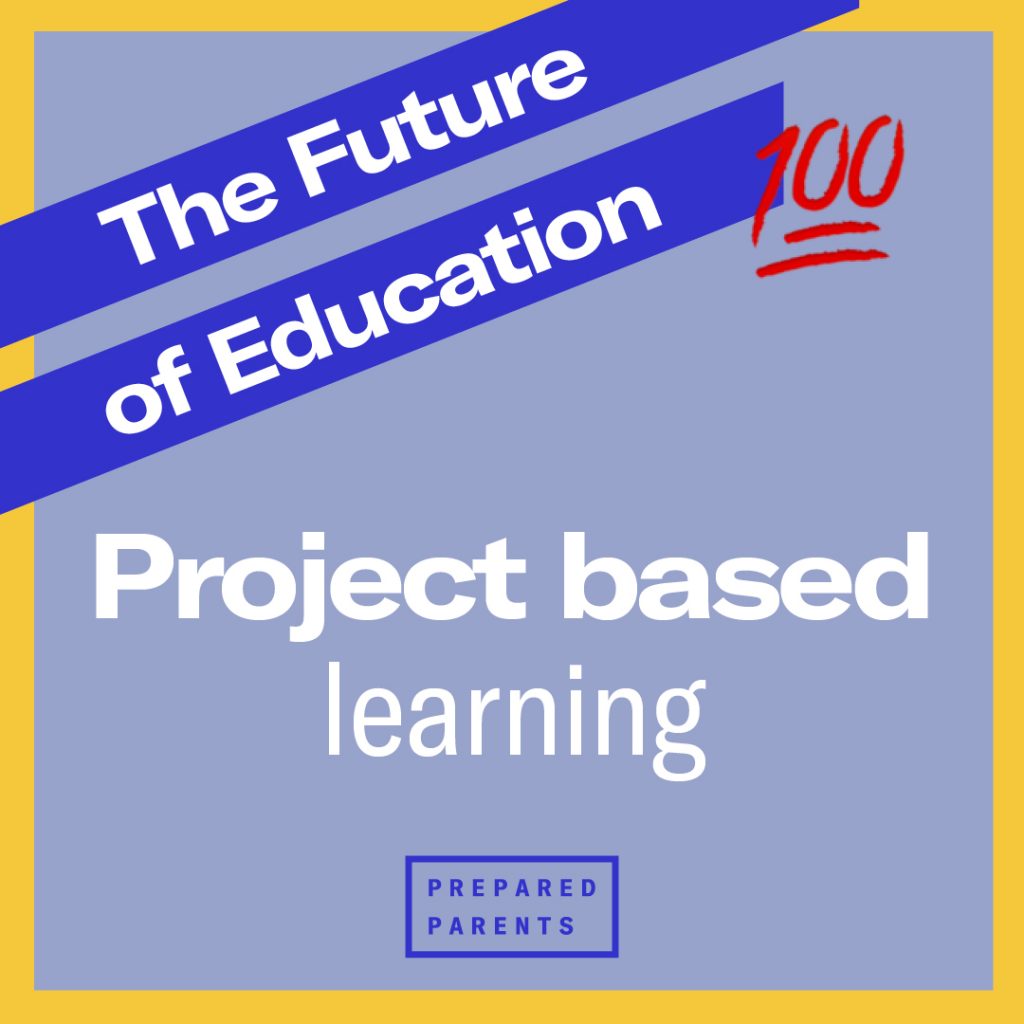
Does the traditional school model of passively learning facts prepare our kids for life’s 21st-century demands? Today employers actively recruit candidates who show potential for leadership, critical thinking, and cross-cultural understanding. The top five skills kids need for future employment are:
- Creativity: generating original ideas and solutions,
- Persuasion: convincing others to support your creativity,
- Collaboration: working as a team to reach a common goal,
- Adaptability: thriving in change and uncertainty, and
- Emotional intelligence: understanding and modulating your emotions and understanding the emotions of others.
Kids develop these skills through project-based learning (PBL)—exploring and solving real-world problems. This type of learning by doing helps kids:
- explore their curiosity,
- gain a sense of purpose,
- learn teamwork and collaboration,
- ask for help when they’re stuck, and
- develop intrinsic motivation to become life-long learners
Let’s start with what we know—kids learn best by doing. We also know that kids retain what they learn better when the learning is associated with strong positive emotions. In fact, science says that negative emotions like stress and low motivation actually stop information from reaching the higher thinking areas of the brain where memory consolidation and storage happens.
So, what key ingredients should be included in projects to make them both fun and educational?
- Incorporate your kid’s interests. Kids are motivated when they’re doing something they’re interested in like writing, building, or cooking. And they’re practicing universal skills through their interests. For example, designing and building a treehouse integrates elements of problem-solving, communication, and critical thinking like planning, designing, and budgeting.
- Make it authentic and real world. An effective project has direct impact on or use in the real world. Focus on a problem, issue, or topic that is relevant to your kid’s life. A project on social justice will activate a kid’s compassion. Designing a park or planning a neighborhood environmental clean-up effort speaks to climate concerns and developing more green space.
- Add rigor and fun. A project that is fun, but doesn’t build content knowledge or critical skills, is what long-time educator and Founding Executive Director of Marshall Street Initiatives, Adam Carter, calls a “dessert project” loaded with empty calories. Consider projects that help kids build their content knowledge on a subject and test that knowledge by doing.
- Be intentional. Begin with a question or challenge, and end with the kid performing a task that directly addresses the problem, answers the question, or meets the challenge.
- Collaborate. While PBL fosters individual growth, learning together is a key element. Step in to help plan the project together and then provide regular feedback on progress. When your kid comes to you for help, listen and provide thoughtful feedback. Be a mentor, not a director. If your kid has a team of friends or relatives they’re working with, that’s an opportunity for consensus, another important skill, that encourages reaching a decision together as a team.
- Celebrates small wins along the way. Your perception of losses and wins might be different from your kid’s. Ask them what they consider the wins to be and record their responses as reminders. Each small win is an encouragement to move forward. Small wins add up to big progress.
Now that you’re ready to start, draw inspiration for project ideas from this list or our collection of Prepared Parents projects!
If well-designed projects are the most effective way to learn, what can this look like in the classroom? They are the “main course” in schools that teach PBL. Each project tends to include five components:
- An essential question: key question your kid is answering or exploring. For example, How do ocean waves affect the shoreline?
- Skills, habits, and content to be learned: specific Universal Skills, Habits of Success, and content knowledge that will be learned, such as oral presentation, self-direction, and wave characteristics.
- Final product: a final deliverable—such as a presentation, piece of art, physical or digital model, report, or performance—that shows what your kid learned.
- Project objective and steps: what your kid will learn and the steps to get there.
- Supporting resources: materials that will be used to learn content and develop skills—book chapters, videos, articles, etc.
What a science project might look like: Acting as engineers, students design actual physical models of buildings and the electrical systems that power them.
What students might learn: how engineers apply scientific knowledge to make predictions, create accurate designs, and achieve engineering goals.
What an English project might look like: Students explore one of the most powerful tools we have: speech.
What students might learn: how to inspire people through the art of persuasion—presenting a piece of writing to a live audience to convince them to take action regarding an unresolved problem.
Ultimately, projects are real-life and hands-on, and mimic what professionals do every day. They can span time, as much as two to six weeks and engage an entire classroom or send a kid into deep research and thinking.

